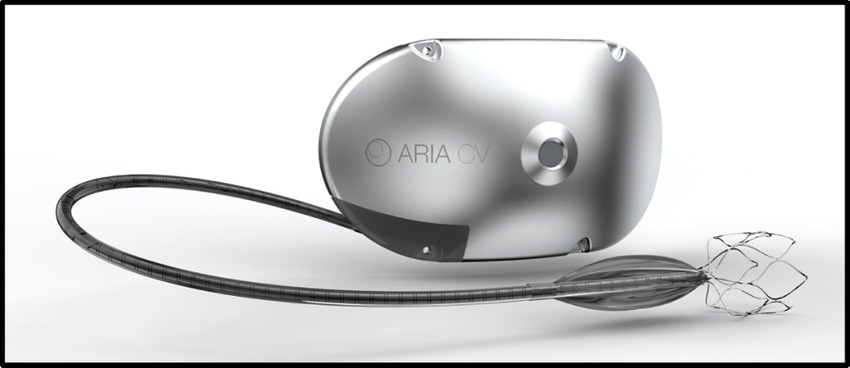The St. Paul, MN-based company raised $31 million in a series B round to fund the early feasibility study of its Aria CV Pulmonary Hypertension System. The device is entering a space that is dominated by pharmaceutical offerings.
February 27, 2020

Aria CV is venturing into a space that few medtech companies have gone before. The St. Paul MN-based company is developing an implantable device to tackle Pulmonary Arterial Hypertension (PAH), a disease that is mostly treated with pharmaceuticals.
Earlier this week, the company raised $31 million in a series B round to help fund an early feasibility study in the U.S. for the Aria CV Pulmonary Hypertension System (Aria CV PH System).
The series B round was led by Xeraya Capital. Also participating in the financing were Longview Ventures, Catalyst Health Ventures, BioStar Ventures, Cedar Point Capital, Frontcourt Group, and three strategic investors Aria CV would not name.
Aria CV was founded about 10 years ago by two doctors (John Scandurra and Karl Vollmers), who were fellows at the University of Minnesota’s Medical Devices center. Dan Gladney, who serves as president and CEO of Ara CV, first came to the firm as an investor when it was formed. He said he became attracted to Aria CV because its technology had to potential to meet an unmet need.
“There’s a huge unmet clinical need in the area of pulmonary arterial hypertension,” Gladney told MD+DI. “Today it’s being treated by drugs only. There are no devices – no implants. It was a new frontier.”
Gladney added, “In the drug market, as I viewed it back then, and I think even today people would agree with this - the drugs are extremely expensive. If you have pulmonary arterial hypertension your insurance company is typically providing you with drugs that cost anywhere between $200,000 a year to $300,000 per patient and that’s huge.”
The implanted Aria CV PH System is designed to restore the benefits of a healthy, elastic pulmonary artery, which in turn reduces cardiac workload and enhances blood flow. This technology has the potential to improve both the duration and quality of life as well as healthcare economics.
“[The drugs] don’t solve the problem,” Gladney said. “It doesn’t get them better. What these drugs do is act like basal dilators. Our technology doesn’t really look at a basal dilator type of approach. Our technology looks at compliance. What we’re trying to do from a compliance point of view is … increase cardiac output and at the same time lower pulse pressures. If we can lower the pressures in the pulmonary artery that should equate to extending life. If we can increase cardiac output without putting any load on the right heart that should increase the quality of life. We’ve got a device that we believe does both and that’s something the drugs don’t do.”
If the feasibility study results are successful, the next phase would be to apply for a pivotal trial in the second half of 2021. The device was successful in a first-in-human study in Austria about two years ago.
Gladney said the device has the potential to open up a whole new market in the cardiovascular space.
“The idea of implanting a catheter with a balloon on it in the left pulmonary artery opens up a whole new frontier in the area of structural heart,” Gladney said. “No one from a device point of view has been able to work with or look at the left pulmonary artery.”
About the Author(s)
You May Also Like




